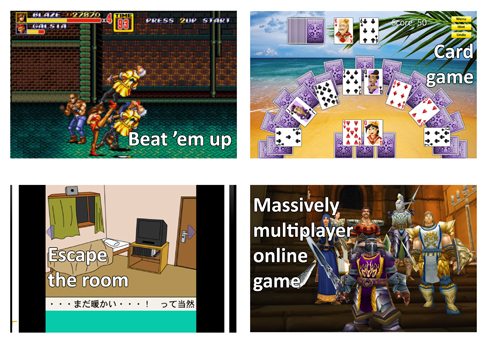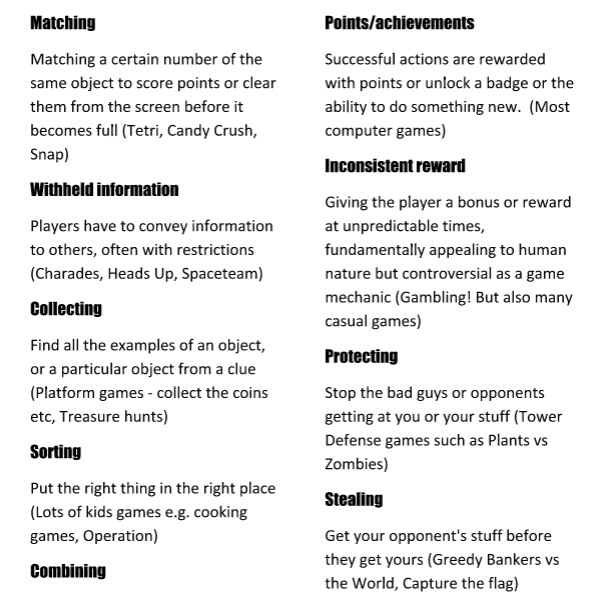
I’m writing this to share a simple tool I created for a gaming workshop I recently ran for a museum, and also to see if anyone has suggestions for additions or improvements to it. It was inspired by another card-based tool that Danny Birchall and I created for games workshops a while back, found here. That one was designed to help people rapidly generate game ideas around a particular (museum related) subject. It was a stack of cards with a game type printed on one side and the description (generally from Wikipedia) printed on the other. I’ve used them a lot in classes and workshops since, they work well. You’re very welcome to download and use them yourself.
For the recent workshop, I was tasked with helping a room of non game designers understand the possibilities of games, and a bit more about the process behind their creation. We talked about game design, played a load of mobile games (mostly from this list of local multiplayer games) and discussed the mechanics, and then split into teams to generate game ideas, pick a favourite, create a paper prototype, play the other team’s games and feedback on it. We had about an hour and a quarter for the idea and prototyping session.
My overall aim was to focus the participants on thinking about game mechanics (rather than story etc), the effect they have on the player, and how they can be married to the intended learning or behavioural objectives. Given the limited time, I needed a way to give each team inspiration and an easy reference point for possible existing game mechanics rather than expecting them to pull them out of thin air with no experience.

So I created a set of game mechanics cards with the mechanic, a description, and a couple of hopefully easily recognisable examples. I gave each team a set and encouraged them to use the cards to inspire ideas. It seemed to work pretty well, with a bit of facilitation. I’ve linked to them here on Google Drive, I hope this works, let me know if you are trying to access them and it doesn’t work. The idea is you cut each one out onto its own card (a job for which I wish I’d had a guillotine).
Please download/make suggestions for improvements
Please feel free to take these and use them any way you like. If you repost them, it would be nice if you could link back here. It would also be nice if they could be expanded and improved. I’m sure there are lots of mechanics I’ve missed or better examples I could have used. Any suggestions for more mechanics to add? Please add comments below or send to me via twitter if easier. Thanks!
At some point I will go back in and tart them up a bit, they aren’t as pretty as the other cards, at which point I will add in suggestions and will also share them here.